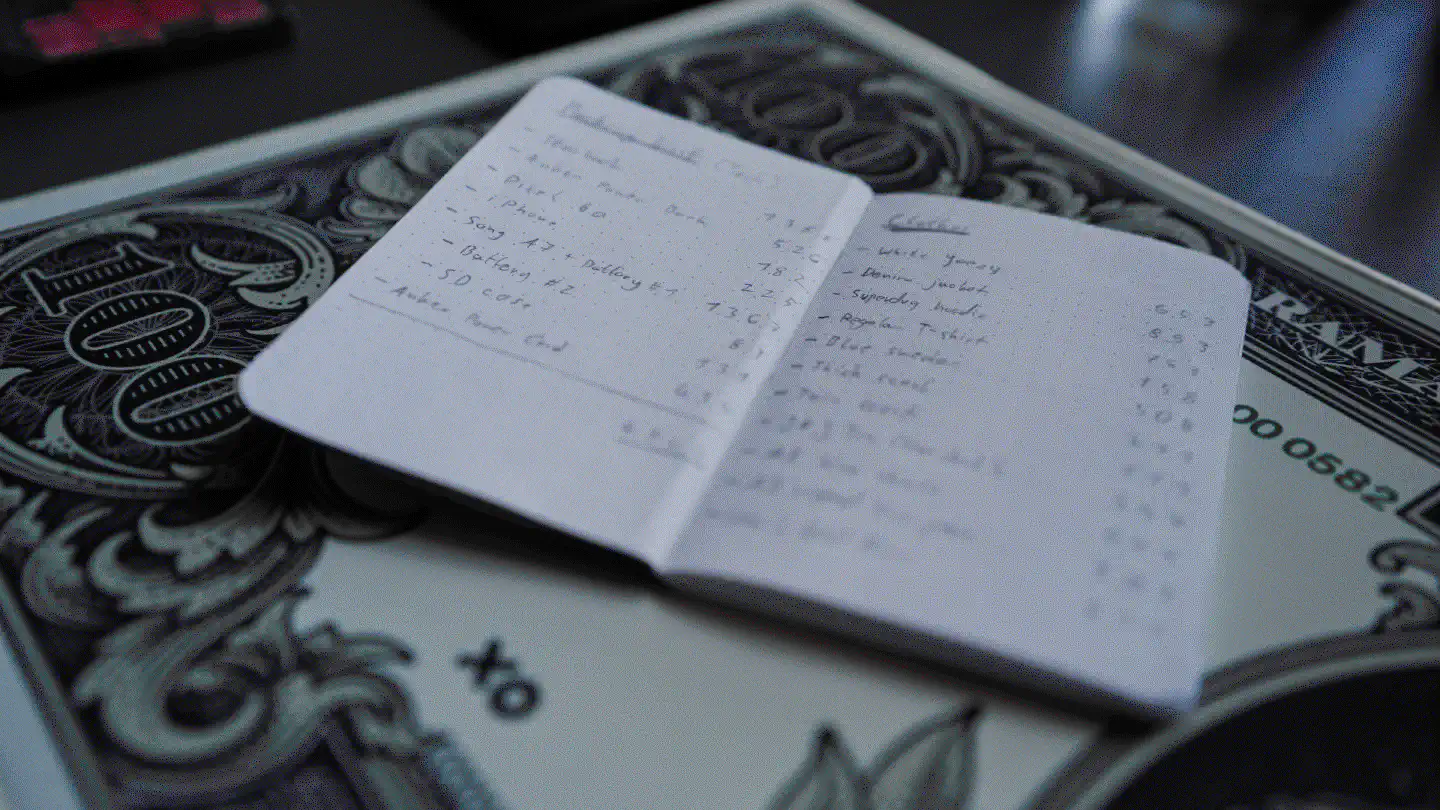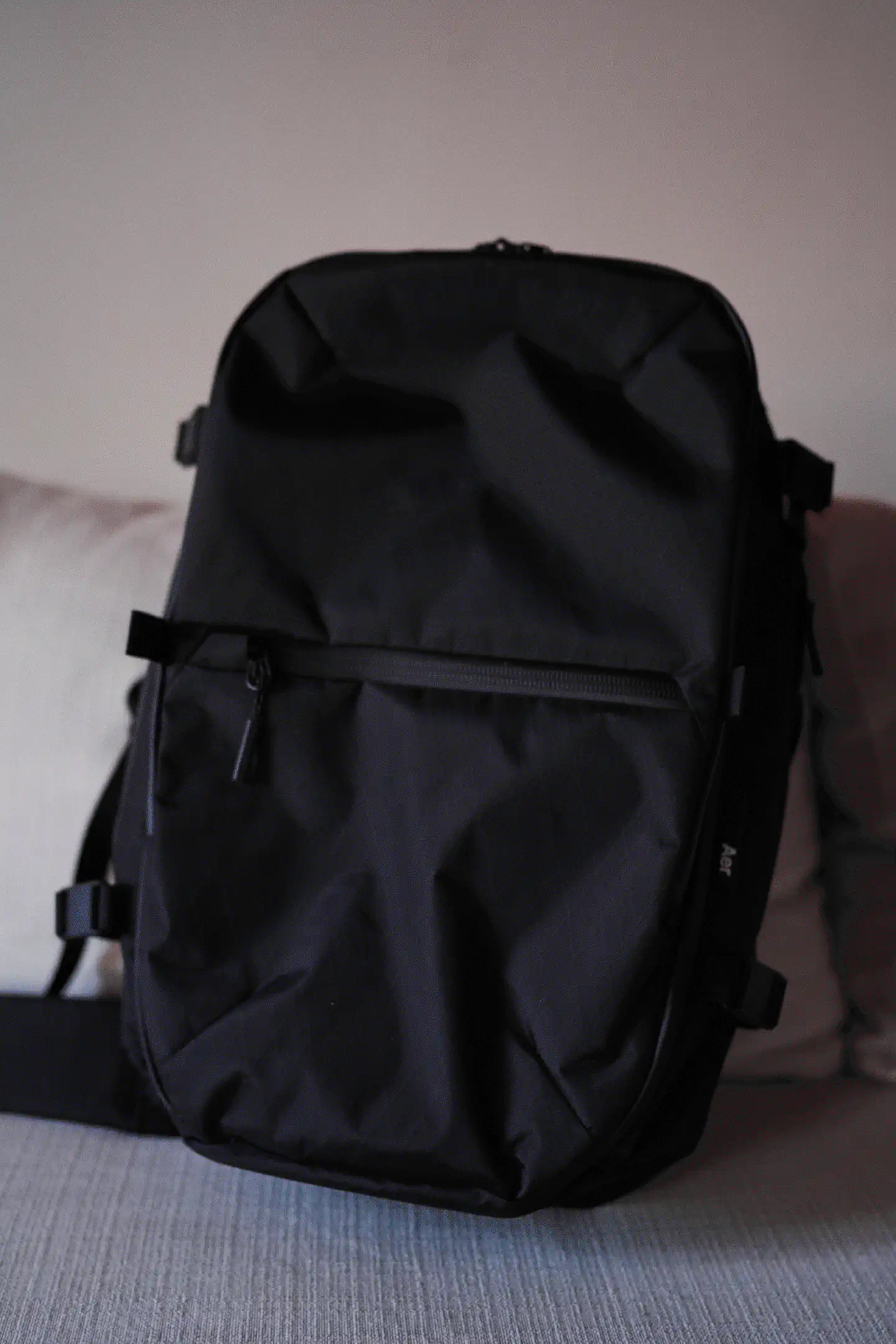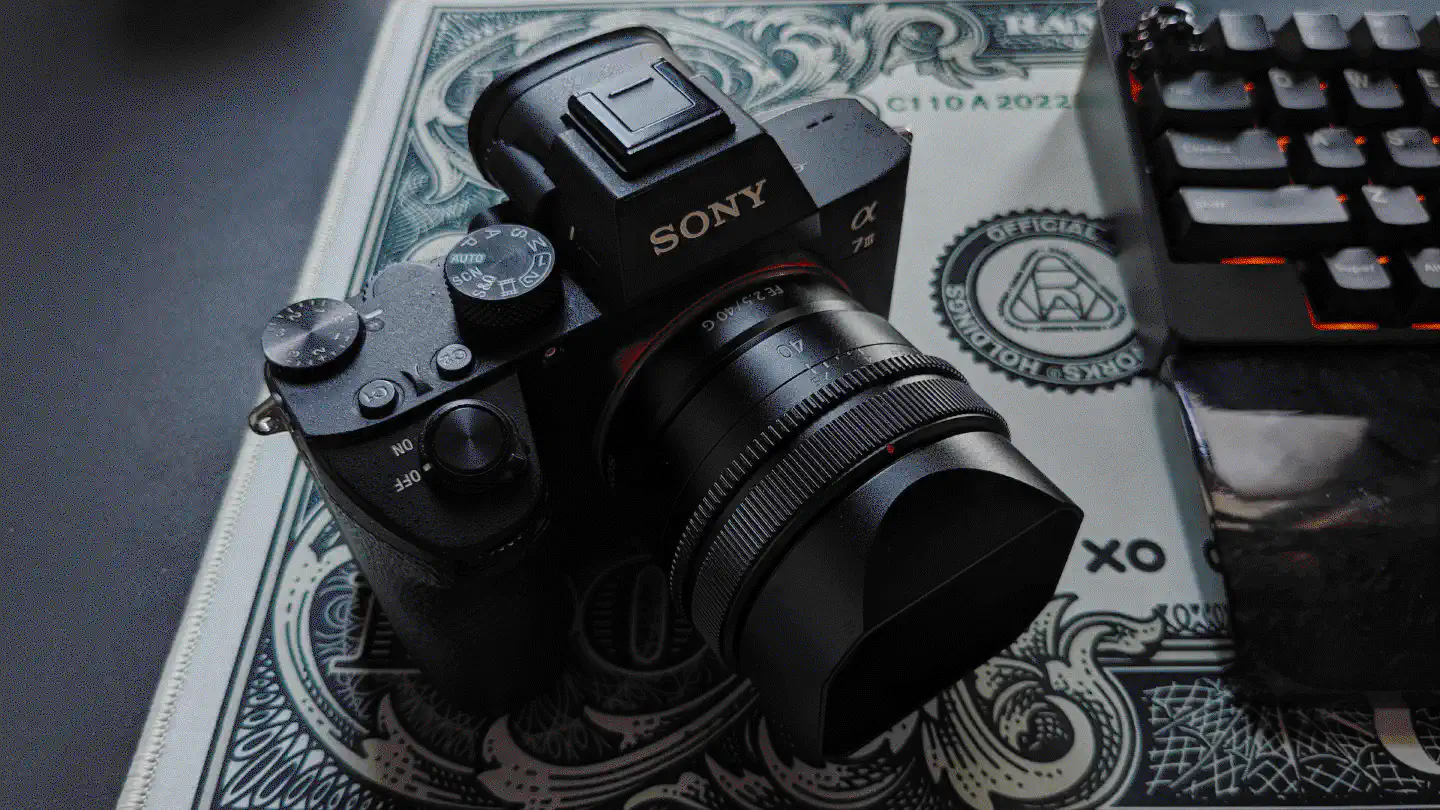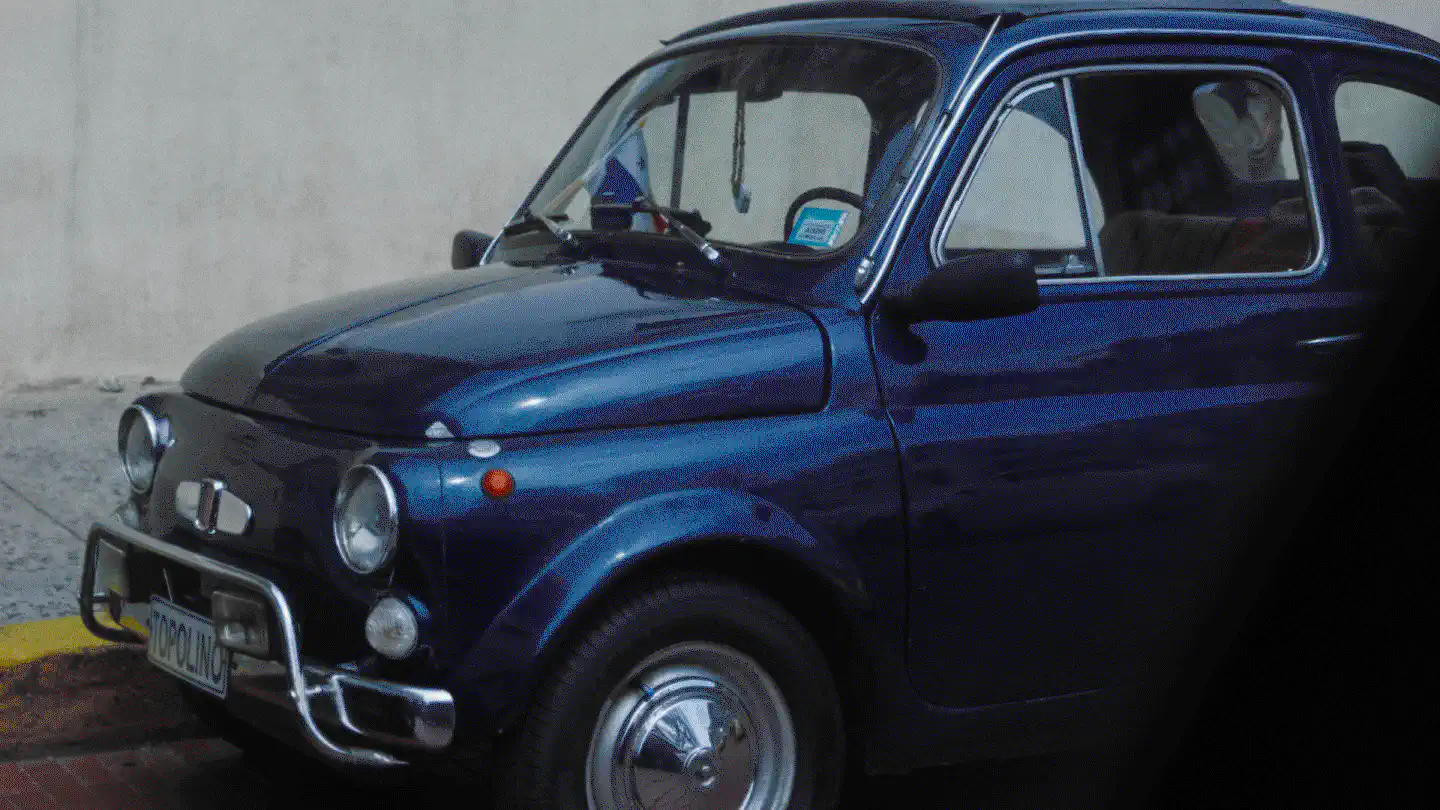Updates 2024/Q1
Project updates from the current consecutive three-month period, with info on the current status of my projects and next steps. You might find this interesting in case you’re using any of my open source tools.

The first quarter includes a mix of personal and open source project updates.
Personal things
Many things happened during the first quarter of 2024. Starting with my personal infrastructure, I replaced my workstation with a new laptop that ultimately allows me to be less bound to a desk and more on the go. Reasons for that are the increased travel activity and the fact that I left the place I called home for the past years.
For the next quarter, I have an exciting and long trip coming up and hence will be posting mainly travel stories into Q3. I won’t be laying low, though, but instead, continue working on a handful of interesting projects behind the curtain and will release the first few updates on those around the beginning of Q3! I’m very much looking forward to this journey, I am excited about all the new experiences and I’m curious to be trying out some new gear along the way.

New luggage
One travel-related purchase that I recently made is a new backpack. After years of traveling with a Patagonia Black Hole MLC 45L, I have finally decided to replace it. The main reason for that was the fact that it has gotten more and more uncomfortable to lug around, mainly due to its straps becoming what one could only describe as thin and unevenly shaped ropes. Because there is no Patagonia store anywhere near the place where I live, I went to various official stores throughout past trips to ask for the backpack to be repaired. Ultimately it is one big promise of Patagonia, right? Don’t toss it, fix it! Well, easier said than done, unfortunately.
None of the stores was able to repair the straps in-store. Repairing the straps would have required me to bring in the bag and have the store ship it to some place to get it fixed and then shipped back. Even the Patagonia website states that this will take up to 10 weeks on average to repair it and send it back. Let alone the carbon footprint that this whole procedure would have, it would not have been able for me to wait for up to ten weeks for my backpack. Besides, repair ain’t free either, as Patagonia will charge $15 within the US for round-trip shipping. In Europe, for example, the whole process is even more tedious. Also, I might end up with differently colored straps.
This just added to my disappointment with Patagonia. I’m one of the (few?) people who still own a Patagonia t-shirt that is made in the USA. While today’s t-shirts are continuing the hefty $50 (or more) price tag, they’re made in Sri Lanka or similar places where supply chain due diligence is practically impossible. Also with their fabrics being thinner and flimsier than ever, I wouldn’t expect them to last for long under the proclaimed outdoor and travel conditions.
With Patagonia compromising on so many different aspects of the brand, buying any of their products these days seems no different than buying any other brand – but it is usually more expensive and might not be the best-in-class product. It feels like Patagonia still enjoys the image they built for themselves in their early days, and hence charge an arm and a leg for their items, yet they have slowly but steadily decreased the quality of their products and services over the past years to a point where it’s easier to fix their products yourself – something you can do with literally any product – or toss them, rather than have them fixed by Patagonia. Let alone the perceived image of the brand today.

Looking for an alternative I researched the following options that might work for me:
- Cotopaxi Allpa 42L Travel Pack (~$220)
- Aer Travel Pack 3 X-Pac 35L (~$280)
- Peak Design Travel Backpack 45L (~300)
- Tortuga Travel Backpack 40L (~$350)
I ultimately decided to go with the Travel Pack 3 X-Pac by Aer, a company that I’ve been buying bags and backpacks from since 2016, and whose products haven’t failed me so far. Although Aer does not have a comparable 45L backpack in their lineup, the Travel Pack 3 X-Pac seemed like a solid choice nevertheless. It offers 35L – with enough squeezing even close to 40L – of storage and is on a whole other level in terms of comfort.
The reasons I ruled out the other options came down to mainly price and comfort. The Cotopaxi was my first choice initially, but after seeing a few reviews of how the backpack literally hangs down on people when packed, I dismissed it as yet another Patagonia-type backpack. The Peak Design appeared to be very similar to the Aer, however, given my bad experience with Peak Design products in the past and the fact that it was more expensive, less comfortable, and was designed for the Peak Design add-on packing cubes I didn’t plan to get, I ruled it out. The Tortuga would have probably won the race due to its size, form stability, and comparable comfort. However, as it was significantly more expensive, I ultimately went for the Aer.

I ordered the Travel Pack 3 X-Pac with the extra hip belt, and, boy oh boy, its comfort is way beyond the Patagonia’s in so many ways. Obviously, due to the smaller size, the Aer cannot be filled up as heavy as the Patagonia, automatically putting less strain on the shoulder straps. However, the Aer’s shoulder straps feel like they could easily sustain the weight of a Patagonia that’s filled up to the brim, without becoming uncomfortable. And with the additional hip belt the weight distribution is so good, that it’s possible to comfortably walk around for hours without feeling as if your shoulders would rip off at any moment.
On top of that, the back cushioning with an added ventilation channel and the overall form stability of the Aer make it so much easier to deal with, that I regret holding on to the Patagonia (and struggling with it) for such a long time. Having that said, the Aer also has its downsides. As mentioned, it offers significantly less storage room than the Patagonia. I’d argue that you could probably fit nearly double the amount of items into the Patagonia than you could into the Aer. While the Travel Pack looks smaller than it is, it is by far not on the same level as the Black Hole. Especially when packing items that aren’t super heavy but rather bulky in size (e.g. shoes), the Patagonia is the clear winner here. If I would want to bring two pairs of shoes in addition to the ones I’m wearing, the Black Hole would be the way to go.

In addition to the size constraint, the Aer is also noticeably heavier than the Patagonia, which might get tricky when dealing with low-cost airlines. With the hip belt attached, the Aer’s empty weight is just shy of 2kg.
New lens
The new backpack is part of the reason why I’ve made serious efforts to trim down my belongings and the gear that I’m going to travel with. I not only downgraded my backpack to a 35L bag, but I also downgraded my camera with a new lens: The Sony FE 40mm F2.5 G. I bought it when it was oN sAlE for $549.99. It’s an expensive lens for what it is – namely a lightweight, sort-of pancake prime lens that lacks image stabilization – but most online reviews seem to unanimously agree that it is the best you can get in that form factor.
If you remember my previous update, I was mentioning that I’m looking into bringing down the total weight of my camera from 1367g to a more manageable number. I was considering changing the whole setup with something like the Fujifilm, especially since Fuji released their new X100VI at the end of February and it looked like a solid option. However, I ultimately decided against it, mainly because I truly like my Sony α7 III. It does an amazing job, it has never let me down and I associate many memories with it. Even though the body is slightly heavier – 566g – than many modern mirrorless cameras, I would still not call it heavy considering it is a full-frame camera. What kills the fun is the heavy glass that is the Zeiss 35mm F1.4 ZA Distagon T*. At 801g it is heavier than the body – even with an added battery (83g) – and not only makes the setup bulky to pack but also very noticeable to carry around for a full day. Even using different carrying mechanisms – whether that’s a Langly Paracord Strap, a regular shoulder strap, or the Peak Design Camera Clip V3 – it is impossible to make it a comfortable everyday camera with the Distagon lens.
With only 173g in weight, the 40mm F2.5 on the other hand brings down the total weight of the camera, including the battery, to 822g. That is 21g more than the Distagon lens alone. Of course, such a significant weight reduction also comes with a few downsides regarding the picture quality.

From the first few tests that I did, I can tell that the 40mm lens is significantly less capable in low-light conditions than the F1.4 Distagon. In daylight conditions, the amount of bokeh and, more importantly, the softness of it is also noticeably less. The lack of image stabilization is something that makes a big difference when recording videos, requiring more work in post to achieve a similarly smooth result. In addition, depending on the amount of software stabilization that has to be applied, the already tighter 40mm aspect might be cropped into something that much rather resembles a 50mm lens.
In general, the 35mm Distagon gives noticeably more room to breathe over the slightly tighter 40mm lens. While 5mm in difference might not sound much, it has an impact and requires some readjusting. Many times I would need to go back a couple of steps to get the image that I would be getting from the 35mm lens. Especially in street photography, this might not always be possible, or at least not quickly enough to snap the photo.
On the upside, however, both lenses seem to be similarly good in terms of focus speed and precision. Maybe it is due to my 35mm Distagon being a couple of years old and probably requiring maintenance, but I found the 40mm to be even slightly crisper in many situations. Also, the overall haptics of the 40mm lens feel better than on the Distagon. The focus as well as the aperture ring movements have a very satisfying, buttery smooth feel to them. But this might also be due to the age difference between the Distagon and the 40mm.
One thing that I was always annoyed of on the Distagon for example, was the Click switch for the aperture that would always end up on the Off position after a while of use. The switch has been way too flimsy, hence it would change almost always when gripping the camera on its lens, and sometimes even just when packing or unpacking it into e.g. its neoprene sleeve. So far the 40mm lens doesn’t seem to share this issue, however, I’ll have to wait and see whether the Click switch there might at some point lose tactility as well.
Anyhow, expect photography posts to also come in 40mm from now on.

(Slightly) New site look
On a different topic, as a regular reader of this website, you might have noticed that a few things have changed. There’s a new typeface in use – Commit Mono – and the tiny bit of JavaScript, that was still around for the mobile burger menu is now gone. In fact, there is no burger menu anymore, but instead a more optimized mobile view of the menu.
The only JavaScript this website still has serves no functional purpose: The per-page QR code – which I’m looking to replace with a static generator soon – Vimeo and YouTube embeds, and my privacy-respecting analytics tool. You can hence disable your JavaScript on this domain and the site will continue to be fully functional, with the only difference being the lack of QR codes and embedded videos.
New keyboard
Another personal project I’ve been pursuing is a new keyboard, mainly intended for travel. My endgame board with its 1739g is perfect for desktop use but unfortunately not at all suitable for travel. Its sibling, the RAMA KARA, is more lightweight at 737g (including the dampener), yet still way too bulky to pack into the front pocket of my new backpack. Given the need for something that is a lot more portable – and ideally below 500g in weight – I decided to use this opportunity to venture into unexplored mechanical keyboard territories. I won’t give away the type of board that I’m working on yet, but I can tell that it won’t be another HHKB! :-O

Since this will be a travel keyboard, I’m planning to finish most of it by mid-April, when I will be hitting the road. Expect a dedicated post on this project around that time.
No new phone
In other news, I unfortunately cracked the screen of my phone when I dropped
it on a concrete floor. The phone, as well as its screen, is still perfectly
functional, however, its IP rating is probably compromised. Nevertheless, I’ve
always been and always will be #teamnocase. Phones are ultimately tools, and
tools get dents and scratches as part of their use. Besides, it gives the device
a story and hence character – especially since I don’t care too much about
resell values, as I usually do not sell such hardware but rather use it till the
bitter end. I’m still enjoying the Google Pixel 6a with GrapheneOS and
I’m not planning to replace it anytime soon. Performance is completely
sufficient for what I need and its camera is still one of the best, even by
today’s standards.

Another thing that is slowly falling apart is the Apple iPhone 11 Pro Max that I still have. It is slowly giving up on life, with the battery requiring re-charging on a nearly bi-daily basis – with ~30 minutes of screen time and while constantly in airplane mode – and random reboots happening every once in a while.
As I solely use the device for telecoms and banking apps that naturally won’t run on a de-googled phone like my Pixel, and I only take it with me when traveling, the device also became a target of my downsizing efforts. With its hefty 225g in weight, it is significantly heavier than the Pixel, which is only 182g. The 21% difference is quite noticeable.
I’m considering replacing the aged iOS device with a OnePlus Nord N30 5G (195g), a nothing Phone(2a) (190g), or something of similar weight and cost. Since it’s going to be a phone for solely running banking and telco apps, and other spyware, I don’t care whether it’s an iOS or an Android device. With Apple’s prices for their Mini and SE phones being unreasonable, I don’t feel like keeping an iOS device around just for the sake of it being an iOS device. Also, Android phones can eventually be repurposed for other things when their batteries will inevitably die, while iOS devices are still not customizable with different operating software.
Some storage trouble
Last but not least, I’ve been running into some trouble with my Ultra-Portable Data Center lately, where one disk in the RAID would continue to be marked as faulted due to several hundreds of errors that would occur when running the storage for prolonged periods of time. I’m currently still monitoring the issue, just to rule out that it’s some OpenZFS bug or maybe even something completely different (e.g. RAM corruption), but I have the feeling that it’s the 2.5" drive giving up. To be frank, I’m not looking to replace any of the drives, because I’ve also been more interested into iterating on the UPDC and reducing its footprint even further instead. I made good progress getting rid of data that I don’t need anymore and I am left with close to 3TB, out of which at least 1TB could be archived and removed from hot storage.
The UPDC is another project that I will approach in Q3. Until then I’ll keep doing regular ZFS snapshots/replications and even manual backups onto Ext4 drives, just to be extra-extra safe. In case one of the four disks dies, I’d likely destroy the whole pool and set up a simple mirror on two of the three surviving drives, just to avoid spending money on replacing these overpriced 2.5" Seagate 4TB drives. Especially since it’s likely that the remaining disks will also start making trouble soon.
Open source projects
I had a bit of time on my hands to pursue my open source projects. Most repositories have received at least dependency upgrades/security fixes, while others have advanced quite a bit as well. Let me highlight the most significant updates down below.
Lemon
After nearly five years of inactivity, I decided to breath in new life into Lemon. Some of you might remember Lemon from back when I posted it for the first time. Back then the project was built in Python and was only intended to run on a Raspberry Pi that had the Pimoroni Unicorn Hat HD on. It was supposed to be a low cost alternative to the LaMetric TIME dot-matrix display, that would display notifications from GitHub, IFTTT and Pushover.
In the past quarter, however, I took some time and completely re-worte Lemon from scratch – this time in Go, to make it a lot easier to install and maintain. Besides, Lemon isn’t only intended to be run on the Raspberry Pi anymore: It’s an actual daemon that can be run on any Linux (and *BSD) desktop, that (for now) displays Pushover notifications as D-Bus desktop notifications. It can however still run on the Raspberry Pi and even use the Pimoroni Unicorn Hat HD to display notifications!
However, with the recent changes in my own infrastructure, Overpush will soon become the default notification source for Lemon, making Pushover a secondary, unmaintained option.
Overpush
In the past quarter I moved my infrastructure away from the Pushover service, to a new project of mine dubbed Overpush. You can find a dedicated post on this topic here.
Overpush already supports the most basic features of Pushover for delivering a notification to an XMPP account, but I’m currently working to make it an actual drop-in replacement for all of the Pushover service. As soon as the Open Client API is ready, Lemon will be supporting Overpush as a primary method for notifications as well.
While I won’t continue actively supporting the Pushover back-ends across any of my projects, I will still keep them around. As Pushover is barely changing, I expect for things to remain functional for a long time to come. As for Overpush, I’m planning to add different transport methods apart from XMPP over time.
Throughout the development process I noticed that the Reddit implementation that I was using, asynq, didn’t build on any BSD platform, which I submitted a fix for that was merged and included into the latest Overpush build. Overpush is hence available on *BSD as well.
Enjoyed this? Support me via Monero, Bitcoin or Ethereum! More info.